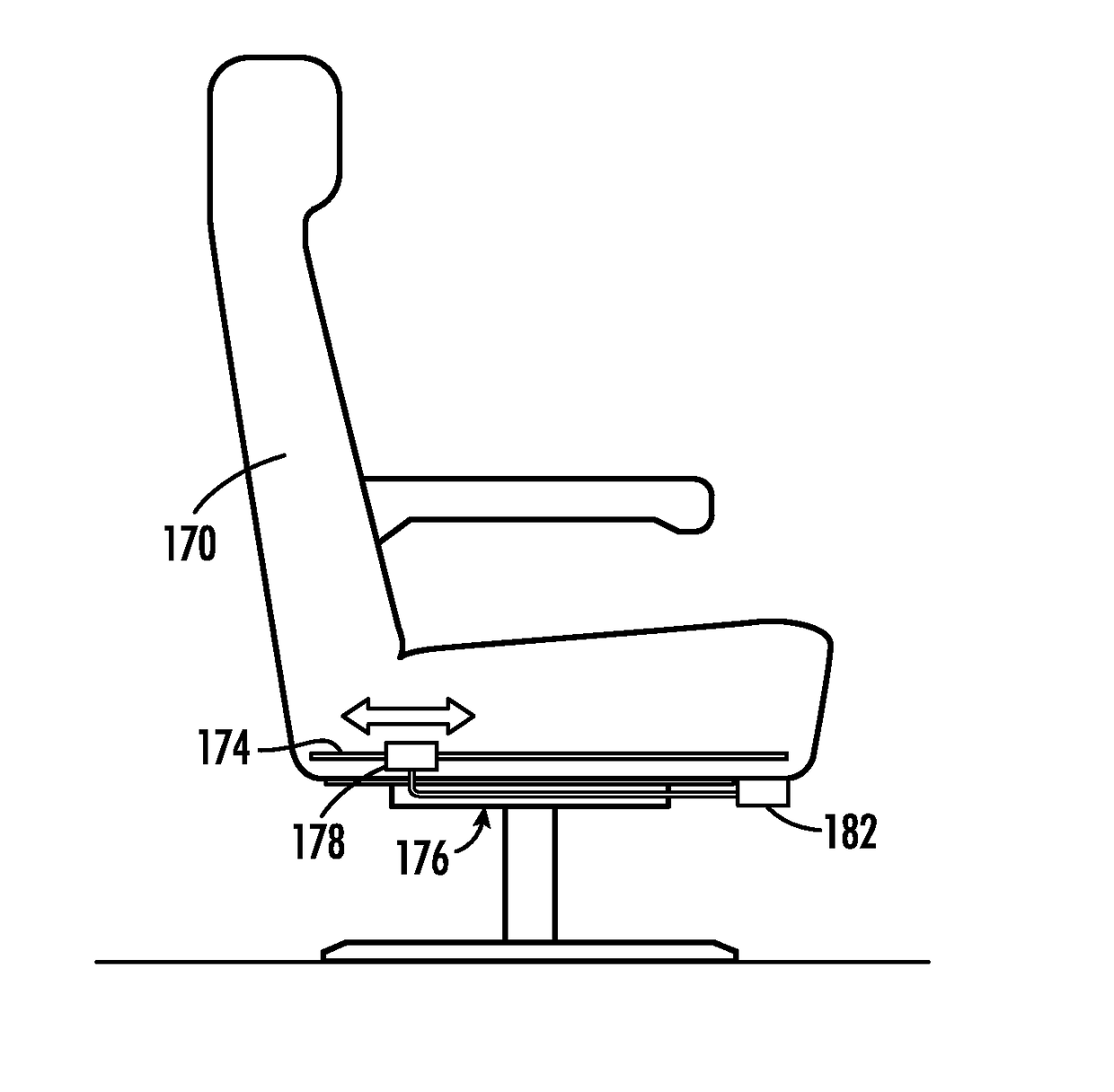Wireless power for vehicular passenger seats
a passenger seat and wireless technology, applied in electric vehicles, transportation and packaging, and battery arrangements, etc., can solve the problems of increasing the complexity of the reconfiguration of seating in a hard-wired or wireless power mode in such a vehicle, and the laborious installation of wires, so as to achieve the effect of reducing the pitch of the sea
- Summary
- Abstract
- Description
- Claims
- Application Information
AI Technical Summary
Benefits of technology
Problems solved by technology
Method used
Image
Examples
Embodiment Construction
[0028]Disclosed herein is a system and method for providing direct current charging power to an electric charging device proximate to the seats of a passenger vehicle. The disclosed system enables vehicular electrical power to be transferred wirelessly to a passenger seat from a transmitting coil behind or on vehicle wall panels or below the vehicle's floor, which thereby reduces wiring requirements and enables seat replacement or reconfiguration without disconnecting and reconnecting wires. Moreover, by design of transmit and receive coils, it allows seats to be located at different pitches, an aspect important in vehicles where seats are configured in different ways across aircraft of the same type or reconfigured in the same aircraft from time to time. A row of seats may contain plural seats that are managed as a unit. One coil can receive power for the row that can then be delivered to a charging port at each of the seats via electrical conductors embedded in the row. Accordingl...
PUM
 Login to View More
Login to View More Abstract
Description
Claims
Application Information
 Login to View More
Login to View More - R&D
- Intellectual Property
- Life Sciences
- Materials
- Tech Scout
- Unparalleled Data Quality
- Higher Quality Content
- 60% Fewer Hallucinations
Browse by: Latest US Patents, China's latest patents, Technical Efficacy Thesaurus, Application Domain, Technology Topic, Popular Technical Reports.
© 2025 PatSnap. All rights reserved.Legal|Privacy policy|Modern Slavery Act Transparency Statement|Sitemap|About US| Contact US: help@patsnap.com



